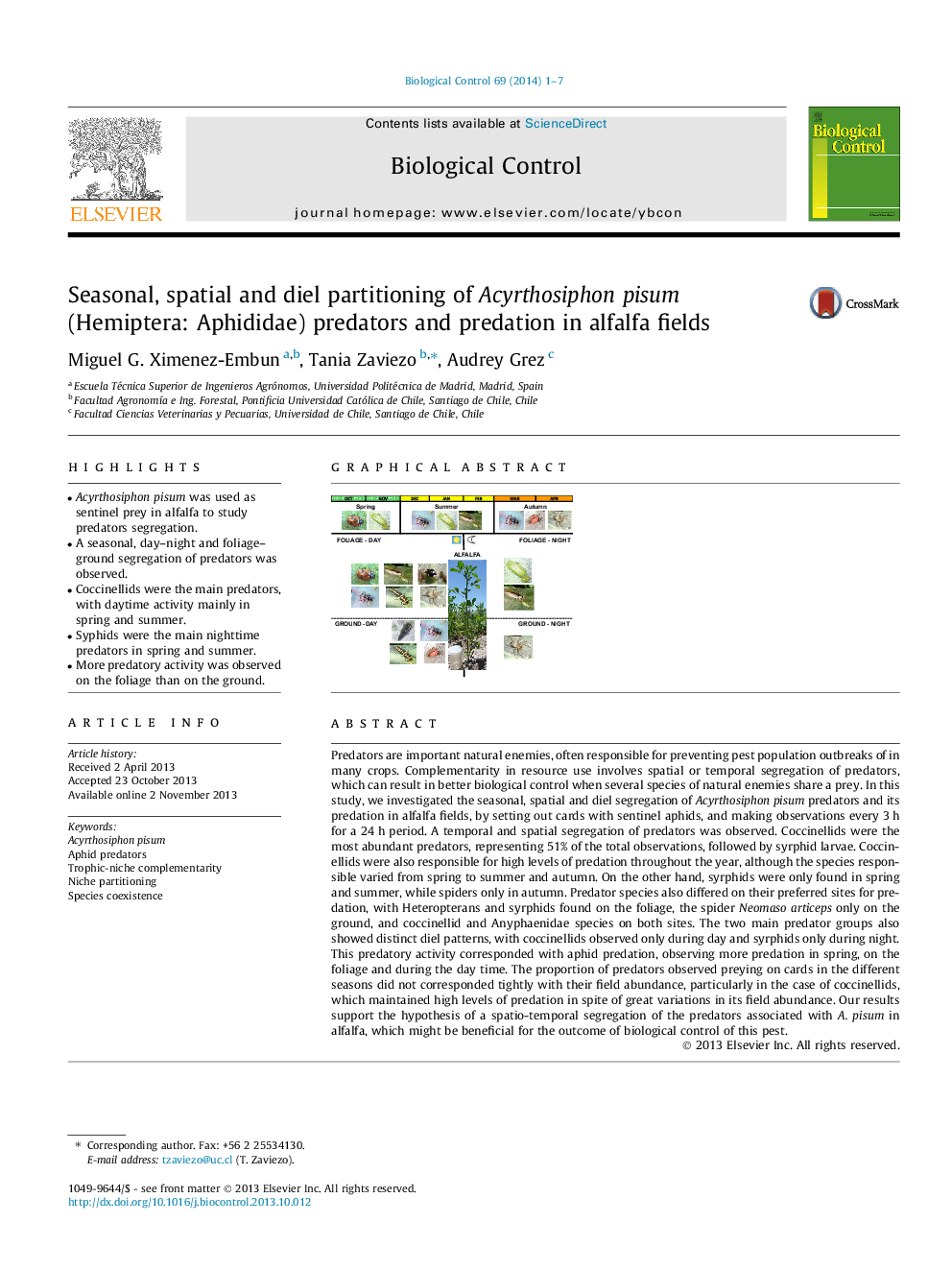| کد مقاله | کد نشریه | سال انتشار | مقاله انگلیسی | نسخه تمام متن |
|---|---|---|---|---|
| 4503973 | 1624265 | 2014 | 7 صفحه PDF | دانلود رایگان |

• Acyrthosiphon pisum was used as sentinel prey in alfalfa to study predators segregation.
• A seasonal, day–night and foliage–ground segregation of predators was observed.
• Coccinellids were the main predators, with daytime activity mainly in spring and summer.
• Syphids were the main nighttime predators in spring and summer.
• More predatory activity was observed on the foliage than on the ground.
Predators are important natural enemies, often responsible for preventing pest population outbreaks of in many crops. Complementarity in resource use involves spatial or temporal segregation of predators, which can result in better biological control when several species of natural enemies share a prey. In this study, we investigated the seasonal, spatial and diel segregation of Acyrthosiphon pisum predators and its predation in alfalfa fields, by setting out cards with sentinel aphids, and making observations every 3 h for a 24 h period. A temporal and spatial segregation of predators was observed. Coccinellids were the most abundant predators, representing 51% of the total observations, followed by syrphid larvae. Coccinellids were also responsible for high levels of predation throughout the year, although the species responsible varied from spring to summer and autumn. On the other hand, syrphids were only found in spring and summer, while spiders only in autumn. Predator species also differed on their preferred sites for predation, with Heteropterans and syrphids found on the foliage, the spider Neomaso articeps only on the ground, and coccinellid and Anyphaenidae species on both sites. The two main predator groups also showed distinct diel patterns, with coccinellids observed only during day and syrphids only during night. This predatory activity corresponded with aphid predation, observing more predation in spring, on the foliage and during the day time. The proportion of predators observed preying on cards in the different seasons did not corresponded tightly with their field abundance, particularly in the case of coccinellids, which maintained high levels of predation in spite of great variations in its field abundance. Our results support the hypothesis of a spatio-temporal segregation of the predators associated with A. pisum in alfalfa, which might be beneficial for the outcome of biological control of this pest.
Figure optionsDownload as PowerPoint slide
Journal: Biological Control - Volume 69, February 2014, Pages 1–7